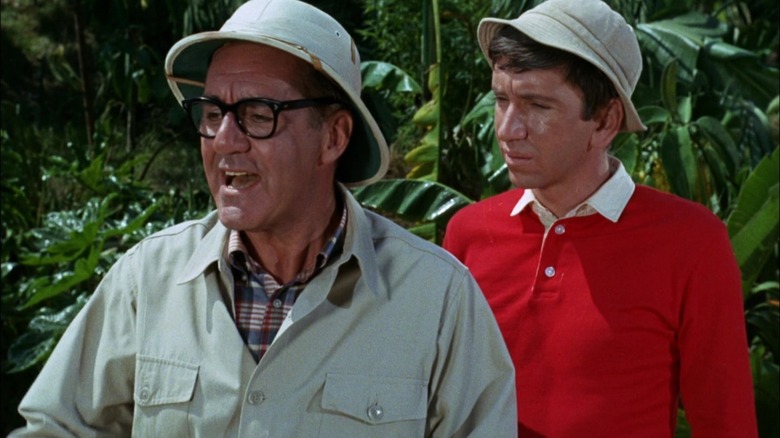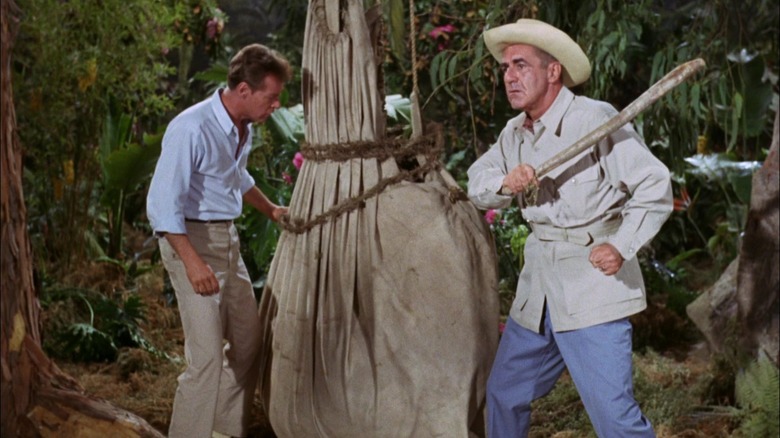
Jim Backus began his acting career in the 1940s, lending his voice to myriad radio dramas and animated shorts. He was a recognizable staple in Hollywood throughout the 1950s and 1960s, having appeared in films like “Rebel Without a Cause,” “The Naked Hills,” “Man of a Thousand Faces,” “Zotz!,” “It’s a Mad, Mad, Mad, Mad World,” and dozens of others. Also throughout the same period, Backus voiced the whimsically aged Mister Magoo in many, many cartoons. In addition, he headlined his own sitcom, “The Jim Backus Show,” and appeared on “The Untouchables.” He was capable of dramatic work, comedic work, and everything in between. By the time Backus played Thurston Howell III on Sherwood Schwartz’s 1964 sitcom “Gilligan’s Island,” he was a massive star, deeply entrenched in Hollywood. Backus was certainly the biggest celebrity on the series and his involvement even led to some major last-minute rewrites.
“Gilligan’s Island,” however, became a bigger hit than anyone could have predicted despite its not-so-successful initial attempt at a pilot. The tale of the seven stranded castaways somehow penetrated deep into the American consciousness right away, attracting millions of viewers. And then, thanks to long-term syndication deals, new generations of TV fans continued to see “Gilligan’s Island” on TV for decades. The show’s seven stars all became deeply associated with their roles … which was ultimately a career detriment. While all seven stars continued to work after “Island” went off the air in 1967, they likely struggled inside L.A.’s casting offices, having to convince possible directors that, yes, they were capable of doing more than just playing their “Gilligan’s Island” characters.
This phenomenon stung Backus deeply, given his storied Hollywood career. In an old interview with the Herald and Review (handily transcribed by MeTV), Backus became miffed that he became known only for his comedy work, post-“Gilligan’s Island.” He knew he was capable of deeply dramatic performances, tragic turns, and intense acting on the stage. Like any actor, he wanted to be seen as greater than only his most famous roles.
Jim Backus wanted to be known for his dramatic work
While attentive “Gilligan’s Island” fans certainly know about Backus’ long, deep acting career, the public at large seemed to know him only as a comedian. And though Backus is a capable comic actor, he wanted everyone to know that he had a much greater range beyond “clueless rich guy” and “clueless blind guy.” To the Herald and Review, he said pretty plainly:
“I get really bothered with people who think that the only things I’ve done are Mr. Magoo and ‘Gilligan’s Island.’ I’m a dramatic actor too, and I’ve done over 80 non-comic movies. […] I feel sometimes that I’ve painted myself into a corner. I want to do some pictures, good, solid, dramatic parts.”
Backus also noted that he had recently appeared in a stage production of “Our Town,” which required tears and tragedy. “In one scene,” he explained, “I cry over my dead wife. How can that be funny?” Fighting the stigma of a single, widespread success can be daunting for an actor. Just ask George Reeves, who deeply hated that he became known for playing Superman, preventing him from getting other acting work. Or, heck, ask any actor from the original “Star Trek,” all of whom are still best known for that one show.
Backus took comfort in the fact, however, that he was asked to appear in so many TV commercials in his career. Commercials, as many know, pay incredibly well, and Backus accumulated a healthy amount of cash because of them. Enough cash, in fact, that he could afford to be picky with his acting roles. As he put it:
“[Commercials are] the best thing in the world because of what we call ‘F-Y’ money. That means that an actor who does them gets paid enough to tell people with bad scripts to … er, well, take them away.”
“F-Y,” of course, stands for “f*** you.” Backus was simply being polite when he said “take them away” instead of “f*** off.” Telling a producer to f*** off is a rare and warm privilege in Hollywood.



Leave a Reply